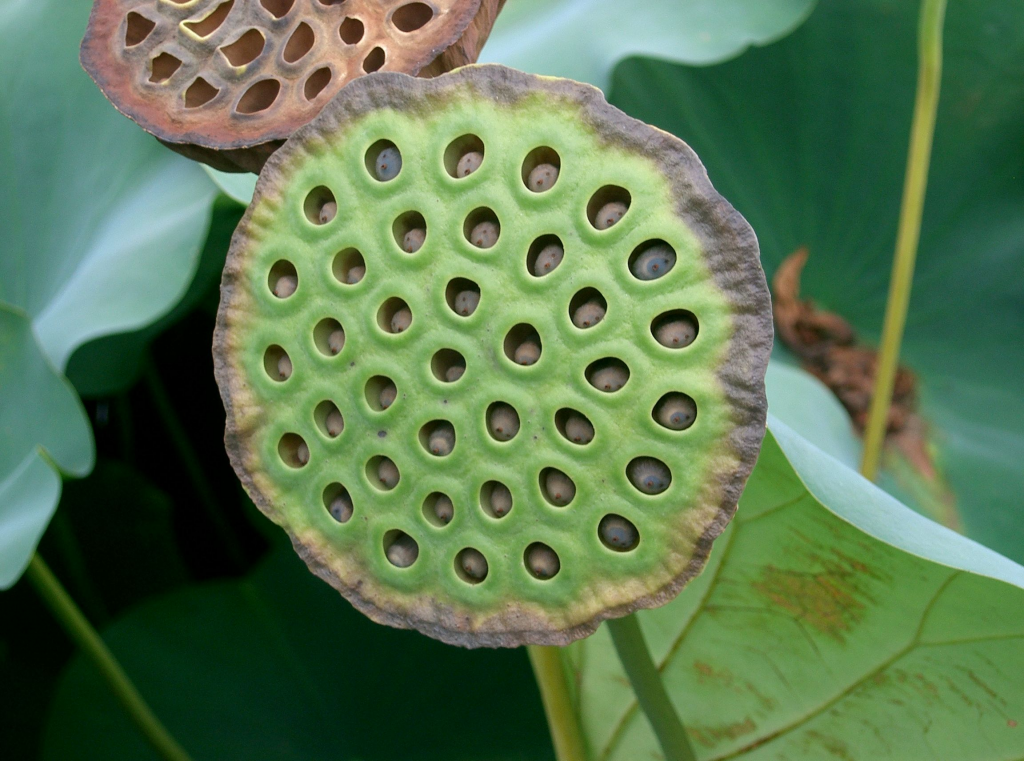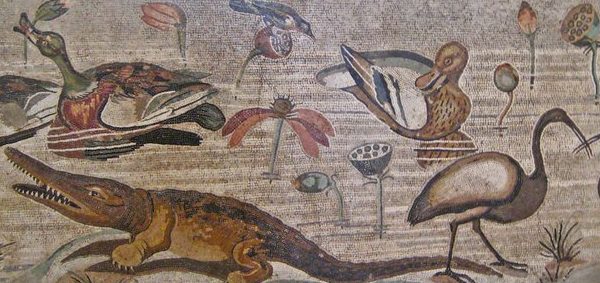

The sacred lotus is an aquatic perennial native to Asia and cultivated in China for over 3000 years for its ornamental, medicinal, and culinary value. Although an exotic in Italy, it was known in ancient Pompeii and appears in the art work of Nilotic scenes together with ibises, hippopotami and crocodiles. The ancient natural historian, Pliny the Elder, wrote about the sacred lotus noting that it grew in the marshes “when the waters of the Nile have retired after its overflow”. He further commented that the dried seeds were pounded and used as flour to make bread. In the modern times, the Chinese use the dried and ground seeds to make a paste for making pastries. Photo Credits Wikipedia

The plants are anchored in the mud by a rhizome that spreads and form colonies. The green waxy leaves are up to two feet across and are held above the surface of the water on stems up to 6 feet long that are attached to the center of the leaf-back. The cup-shaped pink or white flowers are eight to twelve inches across and are produced on erect stems above the foliage. They open during the day and close at night over a period of about three days. In the center of each flower is an inverse-cone receptacle that is two to three inches across and bears the nut-like seeds that can live for up to 1300 years. The receptacle, which differentiates lotus from water lily, becomes woody and is depicted in the middle part of the mosaic from the House of the Faun shown above.
Size: 3-6’ H x 3-4’ W
Light: Full sun
Soil: Organically rich, calm water
Hardiness: Zones 4-10